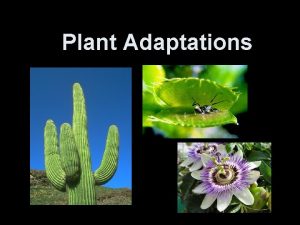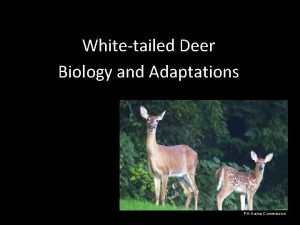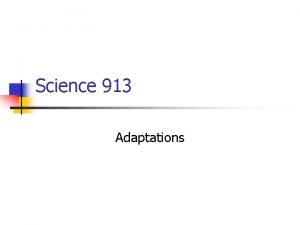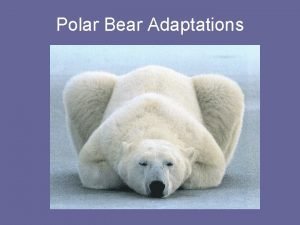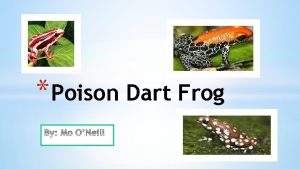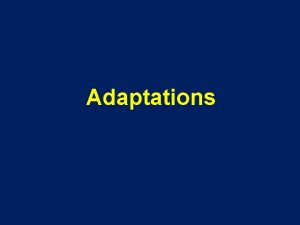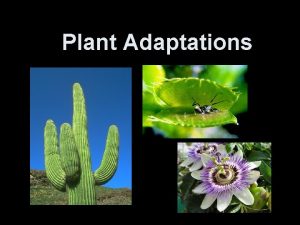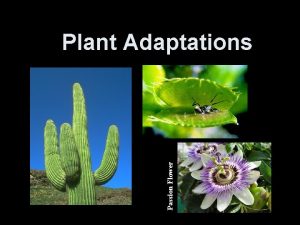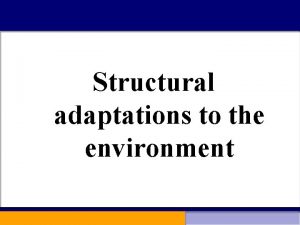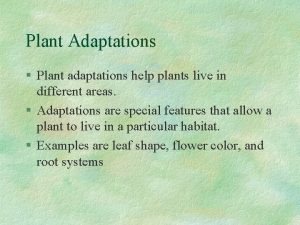Plant Adaptations Types of Adaptations Structural Adaptations The











- Slides: 11

Plant Adaptations

Types of Adaptations Structural Adaptations ◦The way something is built or made. Behavioral Adaptations ◦The way something acts naturally or by instinct.

Plant Adaptations for different Biomes

Group Discussion Each group will get a biome ◦ Desert (table 1) ◦ Grassland (table 2) ◦ Tundra (table 3) ◦ Rainforest (table 4) ◦ Temperate forest (table 5) ◦ Water/ Marine (table 6) In your table group, discuses what kind of adaptations do the plants have in order to live in your biome

Desert Adaptations ◦ Small leaves or spines conserve water ◦ Thick waxy skin holds in water ◦ Roots near the soils surface soak up rain water quickly before it evaporates. ◦ Long roots to get ground water

Grassland Adaptations o. Deep roots help plants survive prairie fires o. Narrow leaves lose less water than broad leaves. o. Flexible stems bend in the wind.

Tundra Adaptations o. Small plants grow close to the ground for warmth. o. Dark colored flowers absorb heat from the sun. o. Fuzzy stems provide protection from wind.

Rainforest Adaptations o. Smooth, slippery bark keeps vines from killing trees. o. Slide shaped leaves lets rain run off so fungus doesn’t grow on plants.

Temperate Forest Adaptations o. Thick bark protects trees o. Dropping leaves in winter conserves water and nutrients during cold winters.

Water Adaptations o. Flexible stems move with water currents o. Floating seeds spread offspring

Assignment o. Make up your own plant to live in a biome of your choice from the notes. o. Make a poster of what your plant and biome looks like o. Write an explanation of your plant and its biome. See rubric
 Plant adaptations in the prairie
Plant adaptations in the prairie Behavioural adaptations in plants
Behavioural adaptations in plants White-tailed deer adaptations
White-tailed deer adaptations Manatee structural adaptations
Manatee structural adaptations Cougar structural adaptations
Cougar structural adaptations Bear behavioural adaptations
Bear behavioural adaptations Golden poison dart frog adaptations
Golden poison dart frog adaptations Adaptation of cheetah
Adaptation of cheetah Structural adaptations examples
Structural adaptations examples Mensaje subliminal camel
Mensaje subliminal camel Q
Q Blow dried llama
Blow dried llama

